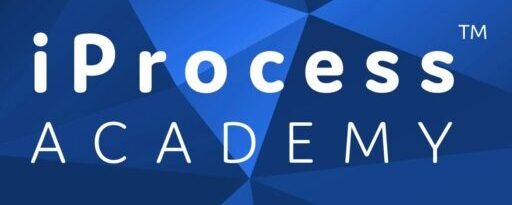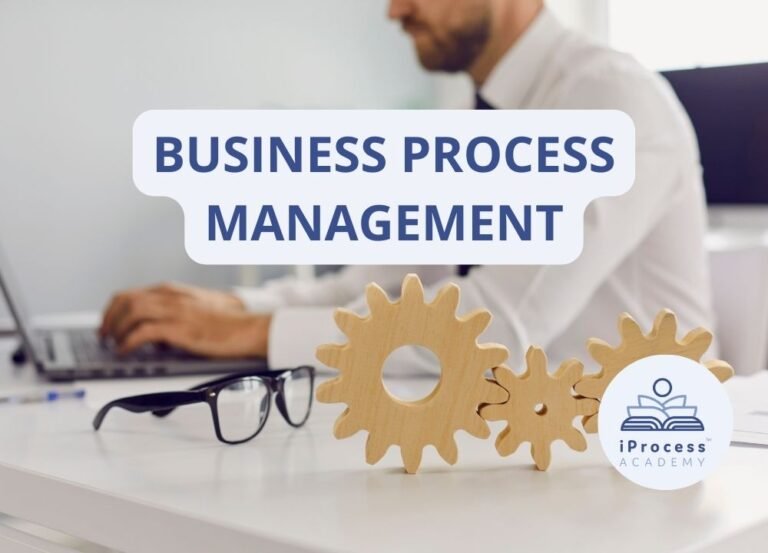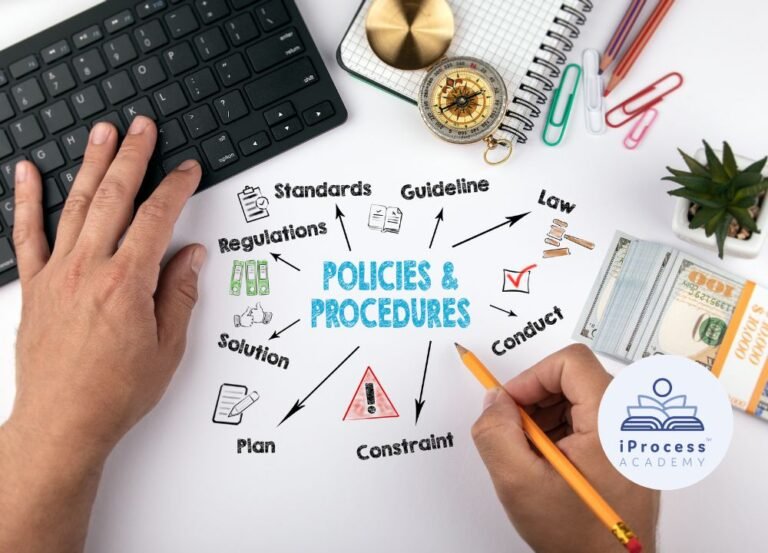What is necessary to include in each work procedure for it to work
I would like to start this article with what a PROCEDURE is in general. In practice, “procedure” and “process” are often confused. How do you distinguish between where the process is and where the procedure is? I will give you a very simple definition on the basis of which it will be possible to distinguish whether it is a procedure.
PROCEDURE is a specific activity that is carried out by a single person.
One person can independently perform the assigned task and does not have to coordinate with anyone HOW to perform the assigned task or share the execution of the assigned task. One person can perform the assigned task independently.
In the beginning, in order to correctly instruct a person how to perform the assigned task, detailed training must be given to that person. However, training alone will not be enough, because after sharing information during the training, a likely person can ask HOW to perform the assigned task after a while.
This is natural when you often receive practical questions after attending training, because practical skills are required to consolidate knowledge. In such cases, comprehensive and structured documentation is of great help.
We very often find descriptions of procedures in ISO standards. But an organisation does not need to have specific standards to describe the activities carried out by a particular person.
Who needs the procedure?
Procedures are necessary to enable a specific individual to perform the assigned task effectively and avoid disrupting colleagues with questions. If there are no procedures in the organisation, it happens that the workload in the organisation is distributed incorrectly. In the practical case of how the workload has been incorrectly distributed in a specific organisation, read this article.
Let’s take a look at what should be included in the working procedure for it to work. The most common errors in procedures can be found in this article. One of the most important things in the preparation of the procedure is that the document that has been prepared must not raise additional questions.
What happens if the reader of the document has What happens if a reader has doubts about a specific sentence’s meaning or is uncertain about which specific position should carry out the assigned task? The procedure must be adjusted. The position should perform the assigned task; such a procedure must be adjusted.
The correct way to prepare the procedure is to ensure that the reader has no questions.
The organisation may draw up orders with detailed procedures that instruct specific positions to follow the procedures. In this case, it will be easier to distribute responsibilities among employees and enable them to follow orders.
Let’s identify the components that each procedure must have in order to function, be helpful, and be understood. Below, I will discuss each part separately, and these parts need to be responsibly evaluated in the preparation of the procedural document.
1. Name of the work procedure
Each procedure must have a clear and specific name that accurately describes its content. The name of the procedure for placing an order for goods with a vendor is very clear and specific. A bad example would look like this: Order Procedure for Goods.
Such a name is vague and raises many questions. Just by reading the name of the procedure, it must be very clear and understandable what the document will be about.
2. The procedure must have a clear objective
At the beginning of the document, it is necessary to briefly describe the objective that this procedure will help to achieve. For example, ensure that orders for goods are placed smoothly with suppliers.
At the beginning of the document, after reading the objective, it must be clear what the document will be about and what the responsible individuals will pursue by carrying out the activities described in the document.
3. Areas covered by the procedure
The document must clearly indicate to which department or position this procedure applies. For example, it applies to the purchasing department that is responsible for purchasing raw materials. The raw material procurement manager is responsible for the procurement of raw materials.
The beginning of the document is important because when reading the home page, we must clearly understand who it will be necessary to delegate to carry out the written document. For this reason, it must be clearly identified to whom the procedure will apply.
4. Concepts and definitions used
The document must clearly state the concepts, definitions, and abbreviations used in the procedure at the beginning. Suppose you are unsure about what a particular idea is about while reading a document. In that case, there is always an opportunity to open the first pages of the document and become acquainted with the concepts and definitions.
5. Responsibility
This section must indicate which positions of employees are responsible for what.
6. Procedure (steps)
Each point of the procedure must be designed by answering the following questions in a coherent manner:
- What? (responsible person)
- What does he/ she do?
- When?
- How?
- What is the result (record, form)?
For example. Every Monday by 12 noon, the raw material procurement manager reviews the raw material residues in the Rivilė program and fills in the order in the Excel form (form F-01).
7. Shapes, templates, and tools used
During the procedure’s preparation, the forms must be named in detail, the indications for finding them must be provided, and specific names of documents and IT systems must be named. For example, Form F-01, CRM, Domestic Goods Requirements Calculator.
8. Documentation and archiving
The procedure must specify clearly and in detail which documents or journals are to be completed, how they are completed, where they are stored, and where they are archived.
9. Accessories
The annexe may contain diagrams, examples of documents or their completion, and examples of forms. This section is useful because it clarifies how to fill out documents correctly and provides a visual reference for what a particular document looks like.
10. Approval and version control
The title page of each procedure must indicate the document version number, date, date or summary of the changes made, and the position, name and signature of the persons who inspected and approved the document.
Here, we have examined the proper preparation of the procedure and its essential components. In my consulting practice, I have met organisations that do not have fully detailed procedures in place. This leads to an uneven distribution of work responsibilities and workloads. In these cases, the person in charge of a particular department or unit often has an excessive workload because they are responsible for the entire department. Meanwhile, support workers do not know what they have to do or they do not know how to perform certain tasks.
This article is the intellectual property of the author. You must provide a reference to the article’s source and name the author when citing any passage from this article.
You can learn more about the author’s competence, Dr. Diana Satkutė, here.




